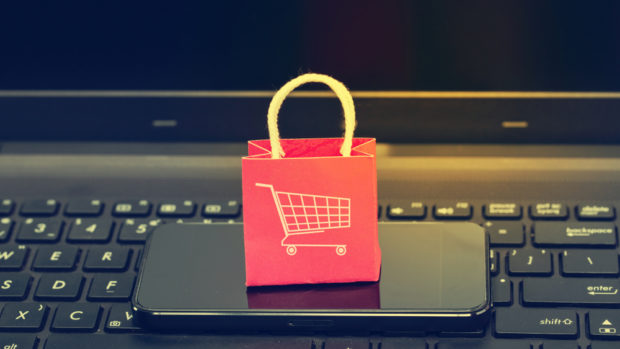
As the Direct-to-Consumer (D2C) channel continues to evolve, Susannah Schofield OBE, Director General of the Direct Selling Association, offers a perspective on what’s shaping the future of the sector, from hyper-personalisation to the rise of socially conscious shopping.
1. Personalisation
Personalisation has long been a buzzword in retail, but in 2025 it is becoming a baseline consumer expectation, with many now viewing tailored shopping experiences as a standard rather than a luxury.
Personalisation in 2025 goes beyond just product recommendations; it’s about creating an entire experience that speaks to the individual.
By leveraging data analytics, AI-driven tools, and advanced customer relationship management (CRM) systems, retailers large and small can deliver highly tailored experiences that delight customers and drive conversion rates. This might include offering individualised, bespoke content and personalised customer journeys, through to personalised packaging and products. The key is that the retail experience feels uniquely crafted for each shopper.
2. ‘Retail-tainment’: Shopping as Entertainment
The concept of ‘retail-tainment’ is set to gain increasing traction in the year ahead. It’s reported that global consumers are willing to pay more for an engaging shopping experience, and D2C brands are well-positioned to take advantage of this trend. Whether it’s through live-streaming interactive product demos, or immersive shopping experiences, D2Cs can redefine the customer journey by integrating entertainment with the act of purchasing.
The proven success of direct selling party-plan models, such as those made famous by Ann Summers, highlights how well D2C brands can combine shopping with social interaction and entertainment. By creating engaging, fun, and crucially, social, experiences, brands can tap into a powerful new way of connecting with customers.
With social media now a key sales channel for direct-selling retailers in the UK (accounting for an estimated 37 per cent of all sales made), ensuring that the retail experience works seamlessly online is a crucial element of a successful D2C strategy. The Covid-19 pandemic was a key catalyst here, and direct-selling brands have responded strongly over recent years, developing strategies to support their independent sales teams to take the traditional selling party online, and meet customers where they wanted to buy.
Furthermore, the appeal of live events, virtual parties, and engaging content goes beyond product promotion; it builds a deeper relationship with your customer base and keeps them coming back for more.
3. Socially Conscious Shopping: Aligning with Gen Z’s Values
Gen Z is expected to represent 2.56 billion consumers globally by 2025, and their values are increasingly shaping the future of consumerism. This generation cares deeply about the social and environmental impact of their purchases, and this means placing their trust – and purchasing power – in brands that align with their values.
Socially conscious shopping within the D2C channel is not just a trend, it’s a movement that D2C brands have been at the forefront of for years – pioneers such as The Body Shop at Home being a good example.
From being transparent about sourcing to fairer production processes and better sustainability practices, Gen Z wants to engage with brands that not only take a stand on the issues that are important to them but also proactively engage in authentic Corporate Social Responsibility (CSR) initiatives.
And it’s not only as consumers that Gen Z are shaping the face of D2C retail, the continued prevalence of influencer marketing is also shaping the way they engage with brands to earn. This generation of workers is rejecting the traditional 9 – 5 and instead looking for ways of earning that fit in with more flexible ways of fulfilling both their personal and professional goals. As a result, independently earning with brands whose products they use, love (and are happy to promote), and whose values they align with, is an attractive option for Gen Z
Brands such as Avon are responding well, recognising that many Gen Zs are ambitious, but want success on their own terms. That means transparent compensation and commission structures, ‘snackable’ training that can be undertaken when and where it suits them, and – crucially – carrot rather stick incentivisation. An all-expenses trip to Thailand for achieving key goals? – tick. A formal annual review to critique performance or strict targets to meet each month? – not so effective; Gen Z will just go to another brand that understands them better.
4. Omnichannel Evolution: Expanding Reach Beyond Digital
Over recent years, digital channels have become a cornerstone of many D2C brands, but there are growing moves by many of the major players that suggest omnichannel is the next frontier, and a potentially important part of a D2C strategy. Avon is a good example here – its successful tie-up with Superdrug, and its physical pop-up stores reportedly delivering well for its original – and still core – Independent Representatives D2C sales channel.
More broadly, D2C brands are increasingly diversifying their retail channels to grow brand awareness and enhance accessibility. This can mean integrating physical retail spaces, leveraging partnerships, and tapping into online marketplaces alongside their traditional D2C channels. This evolution provides a unique opportunity to explore new ways of connecting with customers, and several major D2C brands such (including Usborne and Ann Summers) have successfully integrated both online and offline touchpoints to build stronger, more accessible consumer relationships.








Share